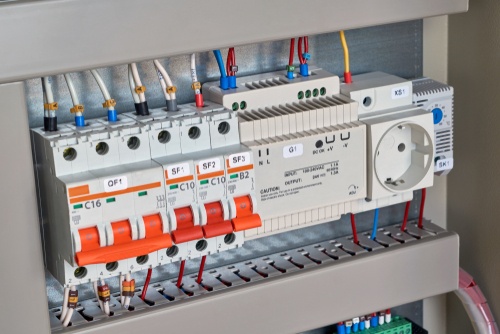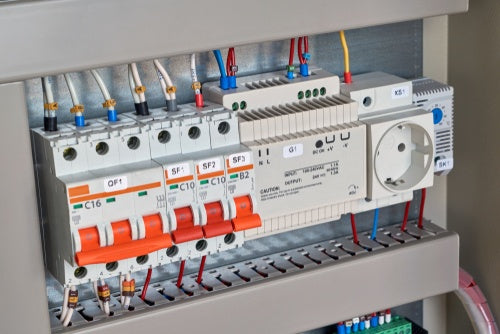To achieve high performance, building systems must use equipment suitable for each application. However, even high-quality equipment performs poorly with incorrect use, and this often occurs when the equipment settings are not configured correctly. Automatic controls are often recommended by MEP engineers because they always maintain optimal settings for building systems without the need for manual adjustments.
Building systems can perform their functions more effectively with automatic controls. For example, heating and cooling equipment can better control indoor temperatures, providing a more comfortable environment for occupants. Automatic controls also reduce the operating cost of many building systems, achieving synergy with energy efficiency measures. A payback period of less than one year is possible in some cases.
This article will focus on some of the most common applications of automatic controls in buildings, but there are many ways to utilize them. Building automation systems (BAS) tend to focus on lighting and HVAC, since these two areas typically account for more than 80% of energy consumption.
Improve your building's performance with automatic controls
Automatic lighting controls
Luminaires can represent more than 20% of energy consumption in commercial buildings, where many work activities require abundant lighting for many hours. The energy consumption of lighting systems can be particularly high if the lamps used are inefficient – incandescent, halogen and metal halide lamps are some examples. Light fixtures also consume more energy if they are left on when not needed, a common mistake when occupants are focused on other tasks.
The best way to control a lighting system changes depending on the application. The most common types of automatic lighting controls are the following:
- Time-based controls simply follow a schedule to turn fixtures on and off. These controls are recommended for areas with predictable occupancy.
- Occupancy controls respond to human presence in certain areas. They use sensors that detect occupants with infrared light, ultrasound, or a combination of both.
- Daylight controls respond to natural sunlight. Basic photocells simply activate lamps when they no longer receive sunlight, while more complex systems gradually dim or brighten lamps based on available daylight.
Automatic controls achieve synergy with LED lighting, which tolerates continuous switching and dimming. On the other hand, older types of lamps suffer a drastic reduction in their useful life when they are changed frequently.
The most basic lighting controls simply provide ON/OFF operation, and dimmers are used when brightness control is needed. Some LED systems also allow you to adjust the lighting color and create different “lighting scenes” for indoor spaces.
Automatic Controls for HVAC Systems
HVAC systems account for more than 50% of energy consumption in some buildings and significant savings are possible with automation. Consulting engineers often recommend variable frequency drives (VFD) for air handlers, cooling towers, compressors, and hydronic pumps. Smart thermostats are a cost-effective option for smaller installations, and gas boilers can improve their performance with automatic purge controls.
Heating and cooling systems are often controlled with manual settings and often operate at full capacity when only partial output is required. In addition to wasting energy, this can cause excessive heating and cooling of interior spaces, causing discomfort to occupants and potentially health problems. Modern chillers, boilers and heat pumps often come with integrated controls and no additional equipment is required in these cases.

Another promising concept is demand-controlled ventilation (DCV), where the fan speed of air handlers is adjusted according to the number of people in an indoor area. DCV can achieve significant savings in buildings with variable occupancy.
Variable refrigerant flow (VRF) systems are a specific type of HVAC installation that can provide heating and cooling by controlling refrigerant flow according to load. VRF systems have higher efficiency than conventional heating and cooling equipment and save space by using refrigerant lines instead of hydronic tubes or bulky air ducts.
Monitoring, Alarms and Security
Because building automation systems utilize many types of sensors, they constantly collect valuable data about equipment and associated components. Automatic controls can be configured to send a notification whenever they detect a problem that poses a danger or requires attention from maintenance personnel.
Alarm systems can be integrated with building automation platforms, providing visibility into all zones and their status. Building managers can access this data in real time and the system can send automatic notifications in response to dangerous conditions.
Automatic Controls for Energy Generation and Storage
Buildings with their own generation and storage systems can obtain greater benefits from these technologies by adding smart controls. Consider the following example with electricity storage:
- If the building is subject to variable electricity tariffs, a storage system can be set up to take advantage of low kWh prices and avoid grid draw when high kWh prices apply.
- Energy storage can also be used to reduce consumption peaks, reducing capacity charges on the energy bill.
Energy storage eliminates the main limitation of solar photovoltaic systems and wind turbines, which is their dependence on variable energy inputs. Microturbines powered by natural gas or biomass are also viable in some buildings, providing a controllable energy source that makes the building less dependent on the electrical grid.
Final Recommendation
Automatic controls can enhance all types of building systems, improving their performance and reducing energy consumption. However, using the right device for each application is very important; The consequences of using the wrong controls range from poor performance to equipment damage and costly repairs.
Professional MEP engineers can design appropriate controls for each building system, specifying the best sensors and communications devices for each application. Automatic controls are often proposed after the energy audit, given their energy saving potential and short payback period.

